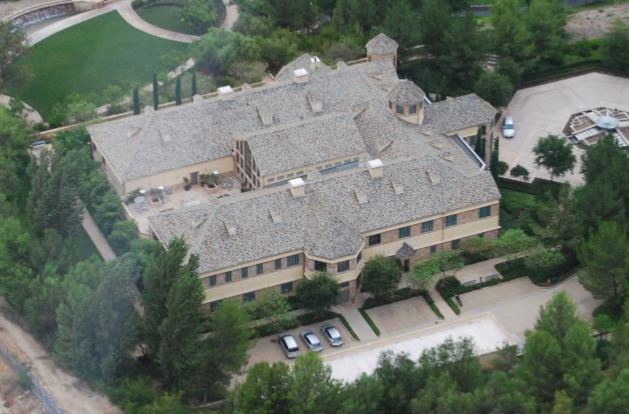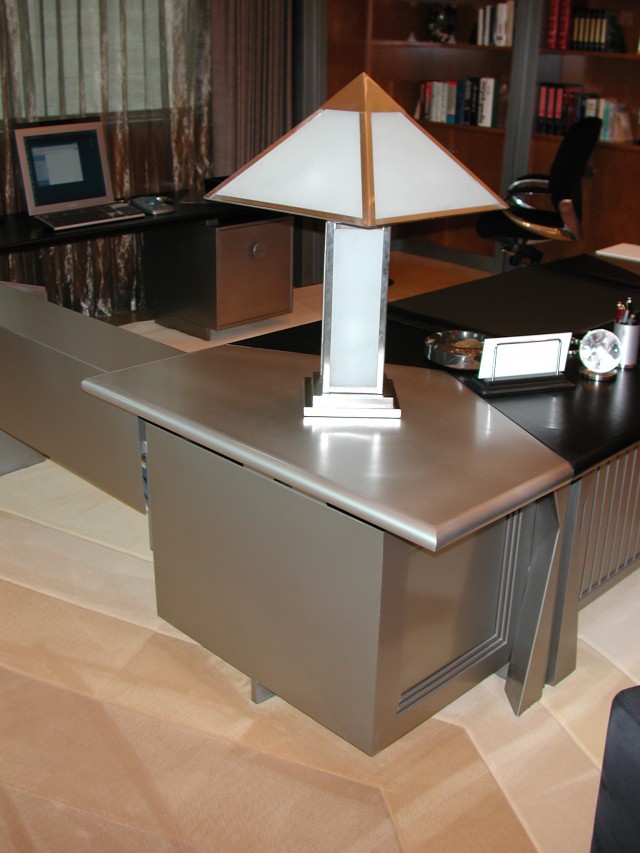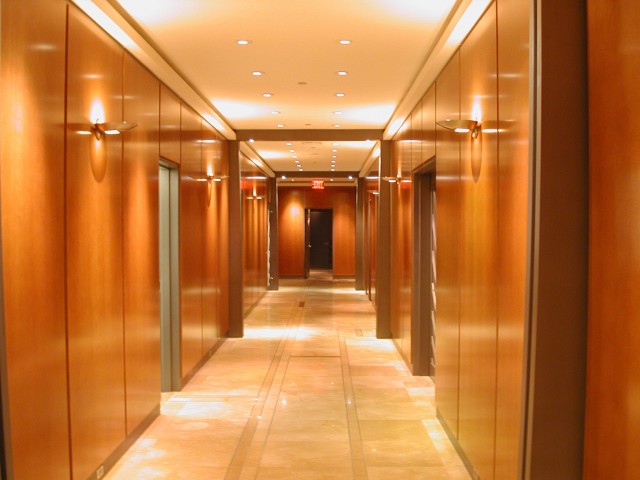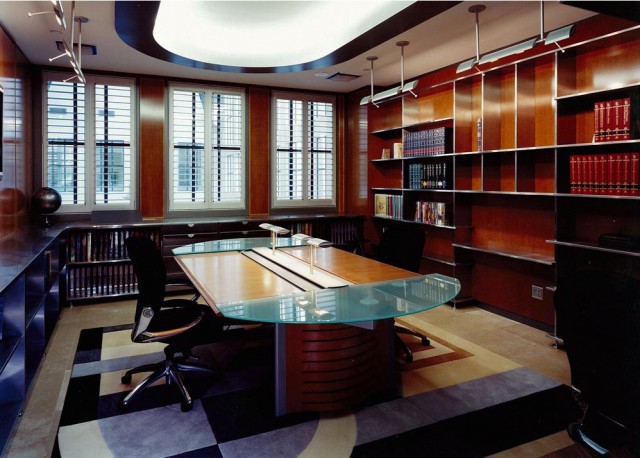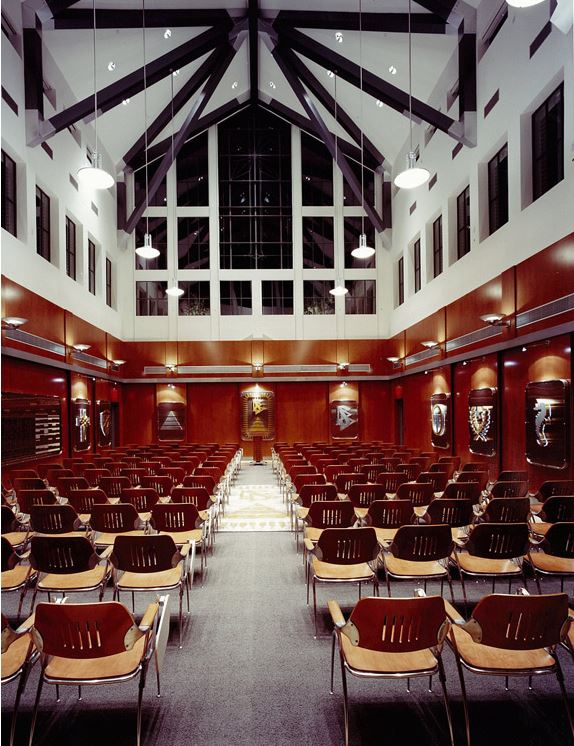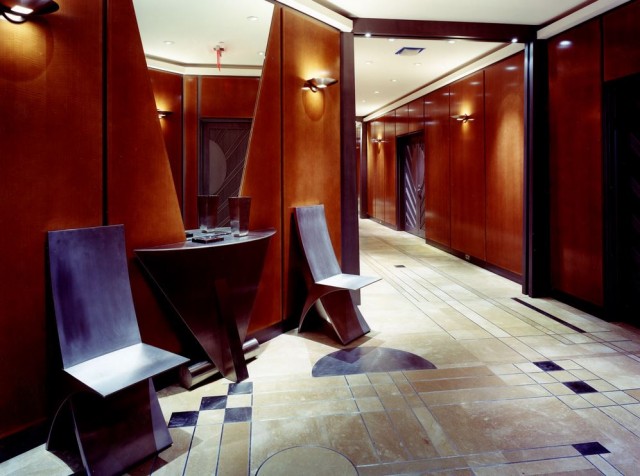In 2009, Scientology’s fortunes took a major hit when several of its highest ranking former officials talked to the St. Petersburg (now Tampa Bay) Times for a blockbuster series titled “The Truth Rundown.” Led by Mark “Marty” Rathbun, who at one time ranked second only to Scientology leader David Miscavige himself, these former executives gave the public its first glimpse into a bizarre world that included a private Scientology prison named “The Hole.”
That was also the year that Marc Headley revealed what was happening at Scientology’s secretive California “Int Base” in his book Blown for Good. Since then, these defectors — including Amy Scobee, Mike Rinder, Tom DeVocht, and Jefferson Hawkins — have provided a compelling picture of Scientology that eventually was portrayed last year in Alex Gibney’s Emmy-winning film Going Clear.
But what of more recent defectors from Scientology’s management ranks? In 2012, we profiled John Brousseau, the last person to leave Int Base and go public about it. He drove away from the base one day in 2010.
Getting information about what is happening in Scientology’s upper management has been difficult since these important officials walked away. It’s coming up on six years since Brousseau made his escape and was tracked down by then-spokesman Tommy Davis for a famous encounter. In 2012, two more key Scientology figures left the base, which we reported at the time. One of them, Ron Miscavige Sr., will be telling his story later this year when his book, “If He Dies, He Dies,” is published by St. Martin’s Press. The other escapee, Scientology founder L. Ron Hubbard’s granddaughter Roanne Horwich, has not talked publicly since making her exit.
But now, there is another defector from the ranks of Scientology’s international management who has come forward.
We met him in Seattle, on our book tour. And now, we’re ready to tell his story. His name is Paul Burkhart, and he left the Sea Organization in August 2013.
Not only is his information on the inner workings of Scientology only a couple of years old, he also worked at Int Base from 1999 to 2009 in a key position that allowed him to observe some of the significant events that took place during that time.
For the first time in years, we have a new eyewitness to what happened at Int Base, in the Hole, and with Shelly Miscavige. And we were curious to see how his memories stack up to what we’ve been told by Rathbun, Rinder, Headley, Scobee, and Brousseau.
Perhaps the most important new information we learned from Burkhart was that when he left in 2013, what was left of Scientology’s upper management was well aware that the church was in dire shape. While church members at big annual events are assured that Scientology is always experiencing more expansion than ever, Burkhart saw with his own eyes the actual reports upper management receives on a daily basis in Scientology, and those reports were unequivocal — Scientology is dying, and fast.
Since he walked away from the Sea Org in 2013, Paul Burkhart has gone on to make a living in a way that’s a lot like what he was doing in Scientology, but without a billion-year contract and for real pay. When we talked to him on the phone recently, he was driving to Seattle, where he’s from, after spending the day in Portland, where he had been doing drawings and construction plans for new buildings.
In Scientology, that was also his job, making drawings and space plans for the many construction and renovation projects the church is always engaged in around the world.
“I space-planned Portland,” he told us, referring to the “Ideal Org” that opened in that city in May 2013, and which had a grand opening we had a great adventure covering, thanks to Mark Bunker. Burkhart says he didn’t get to go to that event, but he had planned the building down to the smallest detail, and always with David Miscavige approving or holding up every step of it.
Burkhart had a very specialized job in Scientology. He was the architectural drawing guy, and because of that, it put him in a unique position in the center of things, at the same time that it often shielded him from the brutal treatment of employees all around him. Other former Scientology officials tell us they remember how Burkhart had a special niche, and was known for simply doing his work and not getting caught up in the drama around him.
“Paul was a really competent specialist in architectural drawing who, because he was such a specialist, he lived in his own bubble,” former Scientology spokesman Mike Rinder tells us. “But because of what he worked on, Ideal Orgs, Paul was in the center of the shitstorm. So, he’s a very genuine, considered, careful, thoughtful, and smart guy. You know who he reminds me of, is Jeff Hawkins. he doesn’t overstate anything. Nothing Paul Burkhart tells you is inflated or more dramatic than it was.”
Born in Seattle in 1959, Burkhart was in college in 1980 when he found himself “body-routed” into a local Scientology mission there. He had read Dianetics, and was curious about what the church had to offer. He remembers that the staffer at the mission was doing his best to find Burkhart’s “ruin” (the thing in his life that would make him vulnerable to Scientology’s come-on), but Paul says he was more intrigued by the course chart he saw on the wall.
“I had gotten into science and engineering. My family was religious but I had rejected that. I had felt that something was missing, and science wasn’t providing those answers. So here was a ‘spiritual science,’ with ‘axioms,’ and that interested me,” he says.
Burkhart began taking Scientology courses and then joined the mission’s staff. But the early 1980s were hard on the mission network as Hubbard and his young lieutenants made changes to the way Scientology was structured. Burkhart says he became miserable under the tougher new conditions, and then walked away.
“I wanted to make some money. I had been moonlighting, working construction,” he says. We asked if he was still taking courses at this time. “No, I was kind of disconnected from Scientology. But then I just happened to go into the mission for something, and there was this recruiter there, talking about doing construction at the Flag Land Base in Florida.”
It was 1984, and Burkhart decided to jump back into Scientology with both feet. “Within a month and a half I’d sold my car, unleased my apartment, and moved to Flag.” Nine years earlier, in 1975, L. Ron Hubbard had tired of running Scientology from the deck of the yacht Apollo and, after eight years at sea, had directed his private navy, the Sea Organization, to dock its small armada in Florida. Scientology then began a surreptitious takeover of the town of Clearwater, purchasing buildings under the name “United Churches of Florida.” The flagship Apollo was abandoned for the “Flag Land Base,” and its chief location became the Fort Harrison Hotel.
Now, the hotel was undergoing a total remodel, and young Sea Org workers like Burkhart were making it happen, and not always up to code. He remembers that soon after he began work, a whole section of roof gave way because the Sea Org had been piling gravel on it in an unsafe manner. The collapse just missed one of Paul’s coworkers.
After an initial six months on the job, Burkhart signed the Sea Org’s billion-year contract in January 1985. At the renovation project, he was a crew chief. And like any other Scientology employee, he was assigned a “stat” that he had to report — the “value of renovations delivered.” Over time, he says, the workers in renovations kept inflating that statistic.
For a couple of weeks in 1985, Burkhart was sent to Portland to take part in the “religious freedom crusade” as Scientology held large rallies to protest a lawsuit brought by a former member that had resulted in a $35 million judgment against the church. (The judgment was vacated by the judge and the case later settled for a much smaller amount.) When Burkhart returned, he found that the others in his unit had jacked up the weekly renovations stat by ten times, counting things that shouldn’t have gone into the equation. When he complained about it, he was threatened with facing a “committee of evidence” — Scientology’s rough equivalent of a court martial.
Instead, he was transferred in a swap. A Sea Org worker named Mat Pesch was sent from L.A. to Clearwater, and Burkhart moved to Los Angeles.
“I realize now that it was about the same time Leah Remini made the same move, from Flag to L.A.,” Burkhart says with a laugh. In her book Troublemaker, Remini describes being a young Sea Org worker in Clearwater with her sister, but then the two of them left the organization when they were threatened with its prison program, the Rehabilitation Project Force (RPF). “I never saw Leah at Flag, but I do remember seeing her sister, Nicole. I think I gave her driving lessons once.”
Arriving at the end of 1985 in Los Angeles at Scientology’s headquarters there, the Pacific Area Command, PAC Base, also known as “Big Blue” for the paint on the buildings at the complex off Sunset Boulevard, Burkhart was in time for a significant event that happened just a month later. On January 27, 1986, Burkhart was in the crowd at the Hollywood Palladium as the news that L. Ron Hubbard had died of a stroke was announced in Scientology fashion, with an explanation that Hubbard had actually left his body voluntarily to continue his research in another plane of existence.
“It was a pretty weird event. And I thought, Who are these people on stage?” He had never heard of David Miscavige or Pat Broeker or Marc Yager, the young Sea Org officials who came out to deliver the news about Hubbard.
Burkhart was put on renovations at the Hollywood Celebrity Centre, and then to a building that had been purchased on Hollywood Boulevard — the Hollywood Guaranty Building or HGB — which would become home to the Sea Org’s top management in Los Angeles. Then, like so many other Sea Org members, Burkhart was found to be deficient, and was assigned to the RPF.
“It was boiler suits. It was running, it was being jammed up in berthing rooms. I worked at the Celebrity Center in a black boiler suit. I was in the RPF from June 1989 to early 1991,” he remembers. And always, there were more renovations. Through the rest of the 1990s, he worked on construction projects at various buildings at PAC Base, and even went to Australia to work on its “Advanced Org” for six months.
Then, in 1999, he was assigned to a secret project. Early in the year, Scientology had learned that the building it rented for an org in Hamburg, Germany had been sold by its owner. They had only months to find a new location and get it renovated, and Miscavige wanted it done in secret — Germany was cracking down on Scientology at the time, and watching its every move closely.
“I had to smuggle two trucks full of furnishings, things for the sauna, and the rest, without getting noticed. I flew the stuff to Amsterdam, and then hired Danish truck drivers to take it across the border, and all to keep the German government from knowing it was going on,” he says.
As part of its surprise, Scientology held a “European Marathon for Human Rights,” a march of about 1,500 people that started in Athens and made its way to Hamburg. The plan was for the march to gain media attention, and then end up at the new building that would be opened to fanfare without any prior notice.
For a big effect, Burkhart had a huge banner made that he wanted to unfurl in front of the building as part of the surprise. To make it work, he had to build a complex set of pulleys and wires. But he was worried about it not working correctly when the crucial moment came and the march arrived.
“I wanted to test it. So we did it at three in the morning,” he says. They waited until it looked like there were no cars on the street, and then he gave the signal for the banner to unfurl.
“After we dropped it, I noticed that a city maintenance truck had stopped at the intersection. Oh, shit. And sure enough, the police showed up. I went to the edge of the roof to talk to them,” he says. But another employee talked to the police and explained that they were just an American company practicing their grand opening. The police left.
“It was a close call,” Burkhart says with a laugh. Later that day, on October 25, 1999, the new Hamburg org held its grand opening. “Then I came back to L.A., and I was told that I was going up lines.”
After almost 20 years in Scientology, on November 1, 1999, Paul Burkhart was finally on his way to management’s secretive international headquarters, the 500-acre Int Base near Hemet.
After years of proof that he could handle Scientology’s major renovation projects, Paul Burkhart was now being trusted with its most complex and most expensive construction project ever — David Miscavige’s personal offices in the new “Building 50” at Int Base.
Burkhart remembers that when he got to the legendary compound, the staff seemed to know him, and were encouraging.
“It was friendly at first. But then pretty soon you saw how it was up there. Everyone was on edge around Miscavige,” he says.
Building 50 was a massive structure that was being built to house the headquarters of the Religious Technology Center. The RTC was Scientology’s nominally controlling entity, and its chairman of the board is Miscavige, hence his name among Sea Org employees, “COB.” And these offices were going to be lavish.
“But there was nothing approved. Everything was being done and then redone. When I started work on it, Miscavige wanted a Frank Lloyd Wright style, all in wood, for his personal wing. We were nearly done, and we had spent at least hundreds of thousands of dollars just on the wood. Thousands more for his desk. And then he changed his mind. He wanted everything in steel,” he says.
“That was a project where every single space and every detail had to be submitted to COB — it was his building, right? And then it never got used. Only a few people were ever inside it. He never moved into it. It was 40,000 square feet, and it sits empty most of the time.”
Plans for the building would pile up, Burkhart remembers, and then Miscavige would call his executives into a room with a round table. He’d verbally abuse them about the project and complain about their incompetence.
And as 2004 neared, Miscavige increasingly began treating his top lieutenants like they were prisoners.
“I was there for the beginning of The Hole. I was there when he was starting to do that, before the Hole itself started,” he says, remembering one time in particular when about 50 people were told to assemble in a conference room. “We were told to find out each others’ crimes. We couldn’t leave. Mike Rinder and all these other guys were there. And there were some new guys to the base there. One of the new guys said, ‘Yeah, I think Mike Rinder is just kind of an asshole.’ He was trying to get Mike to cough up his crimes.”
“That happened many times,” Rinder says with a laugh when we tell him what Burkhart saw. “The new guys would come in and try to curry favor by doing insane things that were kind of over the top.”
Early in 2004, according to Rinder, Rathbun, Brousseau, DeVocht, and others, Miscavige had another group of top management assigned to a set of double-wide trailers with offices, and then simply kept them locked in. It became known as “The Hole,” and Brousseau was assigned to put metal bars on the windows and doors. Rinder, Rathbun, Headley, and DeVocht eventually found themselves held in the makeshift prison for some time. Rathbun spent just a few days in it. Rinder spent more than a year. And some prisoners lived in the Hole from 2004 to 2009, when, Brousseau says, conditions were relaxed somewhat after reports about its conditions began to show up in the media.
Burkhart says that the members of the Landlord Office, where he worked, were also assigned to join the prisoners in the Hole. But his boss, a woman named Laurence Guenat, was spared. And then she argued that she couldn’t do her work without Paul, and he too was allowed to stay out of the Hole. But each day, he’d see the prisoners as they were marched through a tunnel under Highway 79 to the south side so they could take showers in a building next door to where Burkhart worked.
So you saw, with your own eyes, that Mike Rinder was a prisoner in the Hole? “Yes,” Burkhart says. Heber Jentzsch? Yes. Rena Weinberg? Norman Starkey? Marc Yager?
Yes, says Burkhart. And he not only saw them on their march to the showers. He went inside the Hole often to get papers signed.
You what? we asked, startled by his statement.
Every week, he explained, there were financial requisitions to pay for renovations going on around the world. “I’d have stacks of POs. Laurence and I were handling millions and millions of dollars in renovations at any one time. And I had to go into the Hole to see Coby Knight or Ellen Reynolds or Lyman Spurlock to sign off on them. All three of them were in Finance, and all three of them were in the Hole.”
Or, if money from the International Association of Scientologists (IAS) was to be spent on a building, it had to be in the form of an IAS “grant.” Or there were expenditures by the Church of Spiritual Technology (CST) or the Church of Scientology International (CSI).
“I’d have to go to the Hole and find Marc Yager or Guillaume Lesevre to get them to sign a document,” he remembers.
We asked him what it was like. “There were mainly a bunch of people sitting around at desks. They were working on stuff.” And the conditions? We’ve heard things about what it was like to be locked up in there day after day.
“It stunk, like body odor,” he says. “And they were so beaten down and so convinced they were all shitheads and that Miscavige was mankind’s only savior, there was never an inkling that they needed saving.”
The image really strikes us — executives held in an office, day after day, fed slop and only allowed out for a shower, compelled to hold “seances” where they abused each other to get people to confess to “crimes” against Miscavige. But then in walks Burkhart, carrying documents, looking for Lyman Spurlock to sign off on a million-dollar renovation project.
“It wasn’t only Paul Burkhart. There were people coming in from Gold who needed documents signed for events,” remembers Tom DeVocht, who spent time as a prisoner in the Hole before he defected from Scientology in 2005. Rinder and Headley also told us they remember seeing Burkhart come in with his papers, looking for people to sign off on requisitions. “When you got assigned to be signatory on an account, you stayed the signatory on that account, no matter where you were assigned. Even if you were being held in the Hole,” Headley tells us.
“It was just another indication of how screwed up we all were in the head,” DeVocht says. “The whole thing was so surreal.”
——————–
Texas Supreme Court grants withdrawal of Monique Rathbun’s attorneys
A notification on the docket for Monique Rathbun’s lawsuit, presently being petitioned for review by the Church of Scientology, shows that the state supreme court has granted her motion, lifting the stay in the case so that she can file a similar motion at the trial court in Comal County.
Monique Rathbun is now without counsel at the state supreme court, and will apparently soon be at the trial court level as well. As commenter TX Lawyer predicted, this will also be granted as a routine matter.
——————–
 Posted by Tony Ortega on February 12, 2016 at 07:00
Posted by Tony Ortega on February 12, 2016 at 07:00
E-mail tips and story ideas to tonyo94 AT gmail DOT com or follow us on Twitter. We post behind-the-scenes updates at our Facebook author page. After every new story we send out an alert to our e-mail list and our FB page.
Our book, The Unbreakable Miss Lovely: How the Church of Scientology tried to destroy Paulette Cooper, is on sale at Amazon in paperback and Kindle editions. We’ve posted photographs of Paulette and scenes from her life at a separate location. Reader Sookie put together a complete index. More information about the book, and our 2015 book tour, can also be found at the book’s dedicated page.
Learn about Scientology with our numerous series with experts…
BLOGGING DIANETICS: We read Scientology’s founding text cover to cover with the help of L.A. attorney and former church member Vance Woodward
UP THE BRIDGE: Claire Headley and Bruce Hines train us as Scientologists
GETTING OUR ETHICS IN: Jefferson Hawkins explains Scientology’s system of justice
SCIENTOLOGY MYTHBUSTING: Historian Jon Atack discusses key Scientology concepts
Other links: Shelly Miscavige, ten years gone | The Lisa McPherson story told in real time | The Cathriona White stories | The Leah Remini ‘Knowledge Reports’ | Hear audio of a Scientology excommunication | Scientology’s little day care of horrors | Whatever happened to Steve Fishman? | Felony charges for Scientology’s drug rehab scam | Why Scientology digs bomb-proof vaults in the desert | PZ Myers reads L. Ron Hubbard’s “A History of Man” | Scientology’s Master Spies | Scientology’s Private Dancer | The mystery of the richest Scientologist and his wayward sons | Scientology’s shocking mistreatment of the mentally ill | Scientology boasts about assistance from Google | The Underground Bunker’s Official Theme Song | The Underground Bunker FAQ
Our Guide to Alex Gibney’s film ‘Going Clear,’ and our pages about its principal figures…
Jason Beghe | Tom DeVocht | Sara Goldberg | Paul Haggis | Mark “Marty” Rathbun | Mike Rinder | Spanky Taylor | Hana Whitfield






